- Client
- Festung Königstein gGmbH
- Content
- 3D surveying, historical 3D reconstruction, programming of VR application
- Related references
- Virtual Reality for Museum Exhibition BLM
- Tags
In 2018, the ArcTron 3D GmbH team carried out a very exciting project for Festung Königstein gGmbH. The task had to be realized as follows
As the basis for a comprehensive reconstruction of the Georgenburg, the surveying engineers of ArcTron 3D GmbH initially recorded the object by laser scan. This survey not only laid the foundation for the digital geometry but also the foundation for the reconstruction of the interior floor plan in the state of 1630.
To reconstruct the interior of the Georgenburg with the best possible accuracy, not only the building but also numerous historical installations were comprehensively recorded and documented. These included, for example, a 17th century mantelpiece, preserved and fragmented wooden ceiling panels, door and window portals and much more.
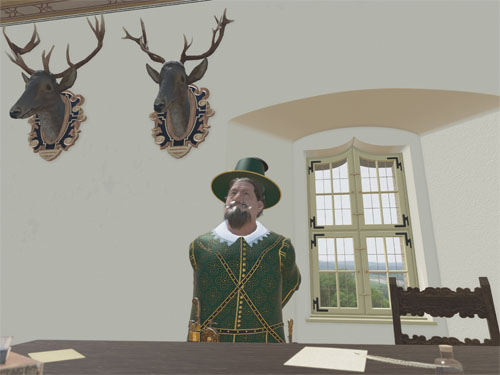
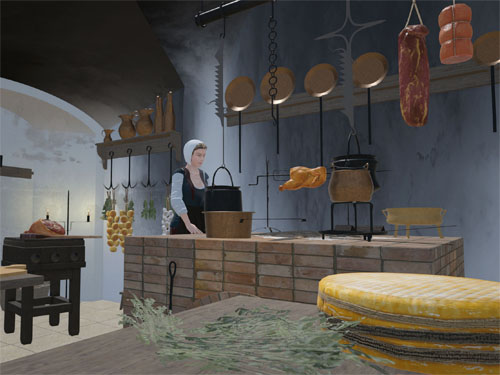
Besides recording the current state of the building, the focus of our reconstruction was the close coordination with technical experts. Scientists of the Königstein fortress like building researchers and restorers supported the project for the technically and scientifically correct reconstruction of all necessary building and room elements.
One of the project tasks was to reconstruct the ceiling paintings according to the detailed specifications of the restorer and to place them correctly.
The graphic designers at ArcTron 3D Ltd. created a total of 11 historically correct reconstructed filling boards as well as several ceiling beams and crossbeam paintings.
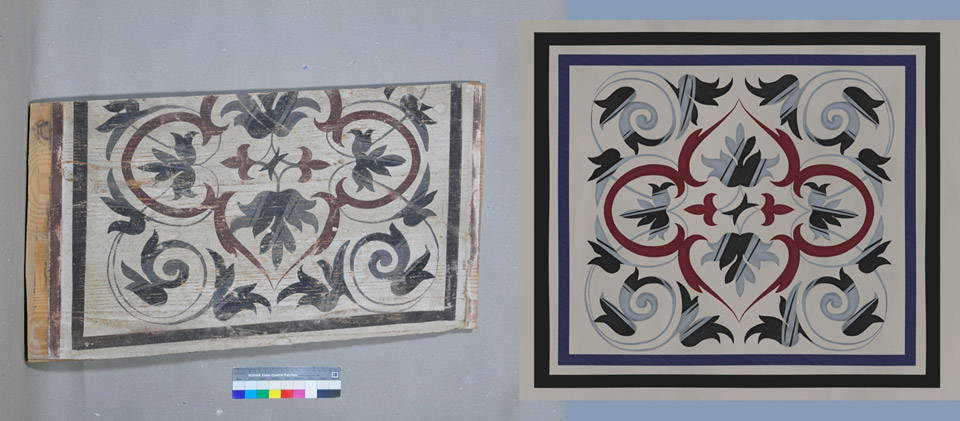
Comparing the current state of the castle and the one of 1630 there are numerous geometrical differences in the ex- & interior of the Georgenburg. This called for defining the central design elements and to determine the object variants to achive a historically exact reconstruction.
Geometric reconstructions were implemented in detail. In order to create nearly true to original historical windows and doors, a mixture of geometric details and textures were used, which were illuminated and structured physically correct using modern techniques.
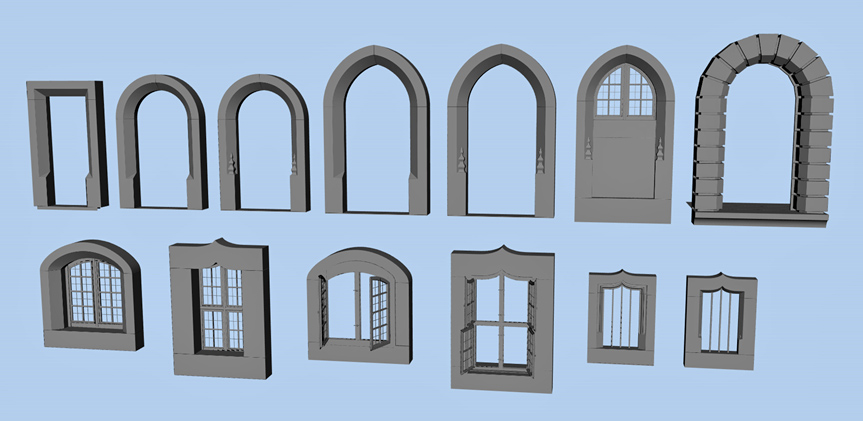
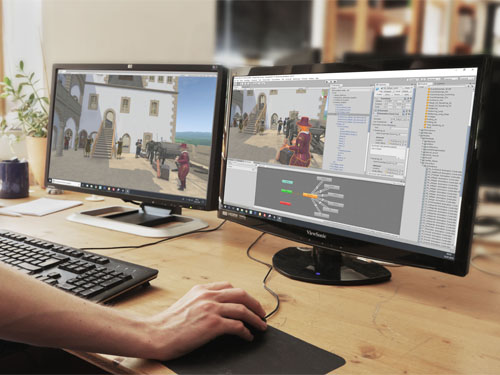
For the relatively new “Physical Based Rendering” (PBR), which is highly realistic in regards to a physically correct surface representation, for each material (for example sandstone) several textures need to be generated. This method ensures that a surface cannot emit more light than it can absorb. A total of 548 textures and 316 materials were created for the entire reconstruction.
In contrast to classic rendering in 3D design programs, this type of visualization distinguishes between the purely constructive work steps and those performed in the real-time environment. In such projects, we only generate the geometries in the 3D design programs, which are later assembled in the real-time environment using their coordinates.
After the design and reconstruction process the animations of all figures have to be worked out. First the figures need a digital skeleton. Then the animations are recorded by motion capturing. This process takes place at the ArcTron 3D headquarters in an empty room that is individually equipped with props.
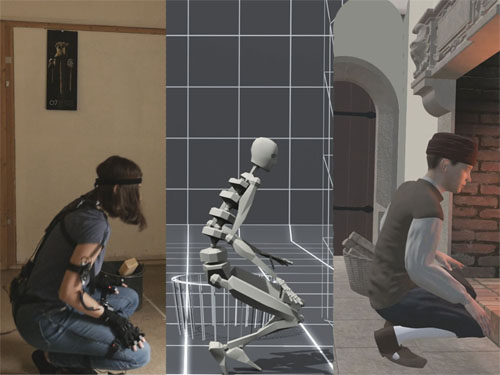
Due to the particularly complex reconstruction, the figures are initially subdivided into production segments. How rich a “definition” of each figure is supposed to become, was determined in advance by the fortress Königstein in a plot with a rough outline.
Once the motion recordings have been completed, they were checked and then transferred to the digital computer model. The picture above right shows the influence of the elbow (white) on the arm using the example of the elector.
Then the motion recordings are fine-tuned and the model is extended with local animation areas (blendshapes). This procedure allows the simple addition of individual subtleties, such as special mouth and eye movements. Finally, the external accessories are adjusted so that, for example, worn equipment behaves realistically.
Since each work step was coordinated in close cooperation with the experts of Festung Königstein, constant approvals of production segments and modules ensured that later correction requests did not become problems. This is an important point, since after the setup of all core elements in the real-time environment, the programming of additional content is carried out.
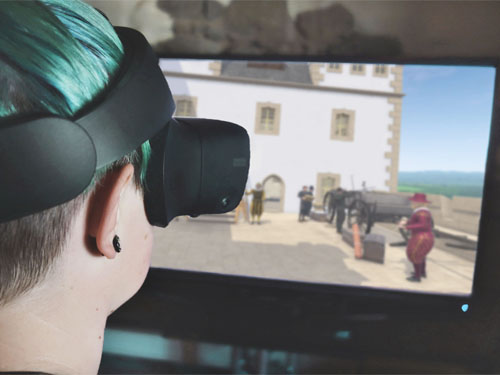
The final and impressive result, the film, teaser and VR application, was presented to the public at the official opening of the project. It took place at the fortress Königstein during the spectacular Renaissance festival on 27 July 2019.
https://blog.festung-koenigstein.de/mit-3d-brille-durch-die-renaissancezeitliche-georgenburg/